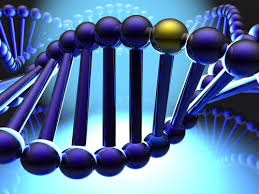Genes and Memes. Who’s In Charge?

Obey!
Suellen loves to garden. When she’s digging and sweating and shoveling, I often wonder if she’s training the flowers to do what she wants or whether the flowers are training her to do what they want. Somehow, flowers have made themselves so seductive that they can convince humans to feed, water, shelter, and reproduce them. Humans do all the work. Plants enjoy the benefits. Who is serving whom? (For a more elegant exploration of this theme, see The Botany of Desire).
We could ask the same question of our genes. In theory, our genes transmit information about us to the next generation. Elliot looks like me because of the genetic material that I’ve passed on. Fortunately for him, Suellen also passed on her good-hair genes. But did we really reproduce ourselves? Or did our genes use us to reproduce themselves? Genes could influence our behavior to cause us to reproduce. As Richard Dawkins has pointed out, “A chicken is just an egg’s way for making another egg.” (Perhaps Suellen is just a bulb’s way of reproducing itself).
And that brings us to memes. The term seems loose and slippery in today’s web usage. So I decided to track down its history and … lo and behold, Richard Dawkins pops up again! In his book, The Selfish Gene in 1976, Dawkins suggested that ideas have the same characteristics as living organisms, including the desire and ability to replicate themselves.
Dawkins coined the term meme and wrote, “Memes propagate themselves in the meme pool by leaping from brain to brain via a process which, in the broad sense, can be called imitation.” As James Gleick writes, “Memes emerge in brains and travel outwards, establishing beachheads on paper and celluloid and anywhere else information can go. … The number three is not a meme; nor is the color blue, nor any simple thought … Memes are complex units, distinct and memorable – units with staying power.”
Like a gene, a meme can influence our behavior. Save for a rainy day is a “good” meme – it influences us to behave prudently. As Nicholas Humphrey notes, a meme can also be a brain parasite. I got a good taste of this on a long bike ride when I couldn’t get the theme from Gilligan’s Island out of my head. It had wormed its way in and wasn’t going to leave.
Of course the idea of a meme is also a meme in itself. We use the term regularly (and somewhat loosely) in the digital world. We think of a meme as any popular idea that travels easily and quickly from brain to brain. They don’t have to be true; most conspiracy theories are memes. They don’t have to be original; clichés are memes. But they do have to replicate themselves and stick around for a while. As Daniel Dennet notes, “A meme is an information packet with attitude.”
So, if we humans are merely the servants of our genes and memes, does that make us bit players in the great, wide world? I’m not sure. But I am sure that a meme is emerging that says just that.
(I adapted much of the meme content for this post from James Gleick’s book, The Information: A History, A Theory, A Flood).
One Response to Genes and Memes. Who’s In Charge?
-
Pingback: Understanding the Railroad Cliché | Travis White Communications